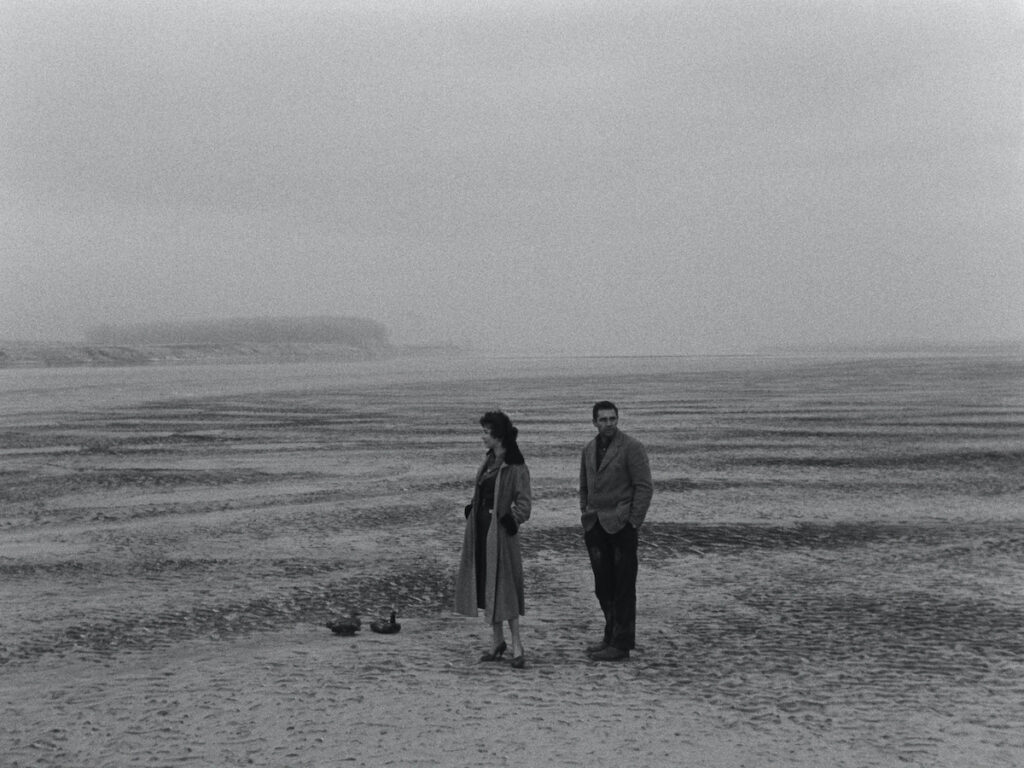‘Il Grido’ Announced Antonioni’s Arrival as Artist, More Than Just Director
Cineastes seeking a bleak but potent example of European art cinema as the days get darker earlier would be hard-pressed to choose any better.

A few years before Michelangelo Antonioni had his breakout international success with “L’Avventura” (1960), the great Italian director released his fifth feature, “Il Grido,” a sad, soulful film marked by characteristics for which he would come to be praised and disdained. In the first 15 minutes alone, there are several Antonioni hallmarks: characters doing a lot of walking, desolate landscapes, and a troubled conversation between a man and a woman.
A new 4K restoration of “Il Grido” starts screening Friday at Manhattan’s Film Forum, and cineastes seeking a bleak but potent example of European art cinema as the days get darker earlier would be hard-pressed to choose any better.
The initial dramatic stakes are fairly straightforward, even if that’s not the case in their execution and eventual development: Protagonist Aldo has been in a relationship with a married woman, Irma (the striking Alida Valli), for several years in a small Italian town as her husband has been in Australia. When Irma finds out that her husband has died, Aldo is happy to be finally able to marry, to legitimize their relationship and their daughter, Rosina. Irma, though, reveals that she has fallen out of love with him, that there is someone else.
Aside from a dismaying scene in which Aldo slaps Irma in public, Antonioni generally sidesteps the melodramatic set-up by showing Aldo trekking around the ghostly village and nearby agricultural areas looking lovelorn and lost, with the character eventually deciding to leave town with Rosina instead of confronting Irma’s new lover. What follows as the two traverse Italy’s Po Valley region provides the film with a trajectory, if not exactly a plot.
As in his black-and-white trilogy of post-war Italian alienation and disaffection — “L’Avventura,” “La Notte,” and “L’Eclisse” — Antonioni has Aldo and Rosina drift along with no impetus, merely encountering the sights and sounds of a slowly modernizing country. A major difference between those films and “Il Grido,” though, is that Aldo is a working-class man. The sights and sounds we see and hear, like starkly pollarded trees, dilapidated shacks, and the drone of heavy machinery, speak to agrarian and proletarian concerns while contrasting a vanishing, almost medieval world with Italy’s industrial growth of the 1950s and ’60s.

These neo-realist glimpses of Italy coincide with other genre signifiers: scenes of physical labor, references to governmental injustice, and child actors as key characters. Of all the women featured in the film, and Aldo meets several along the way, it is Rosina who may be the loneliest.
Aldo is a loving father but he’s not the most attentive, and one pities Rosina for having to lead such an itinerant life at a young age. All she wants to do is play and ask questions, while he is basically oblivious to her needs as the grief of his breakup with Irma deepens into depression. Mirna Girardi breaks hearts as the uncomplaining Rosina, and when Aldo sends her back to live with her mother it’s another example of how he is essentially a good man broken down by heartache, listlessness, and social circumstances.
Antonioni knew well the region he filmed in, having grown up there, and American actor Steve Cochran, who played Aldo, told the New York Times before its American release that the picture was the director’s “own biographical story about the Po Valley.” Indeed, the director had documented the Po River and those who lived on its banks and barges years earlier in a short documentary called “Gente del Po.” Whether Antonioni, like his alter ego, had done odd jobs, hitched rides, and avoided rooming in “expensive” cities is unclear; all the same, the film conveys a sense of personal experience with the territorio and its customs.
The handsome Cochran mouthed the Italian dialogue on set — his lines were dubbed in post-production — but one hardly notices it. While not the strongest of actors, he is perfect for Antoniono’s purposes, which are to have him represent a sensitively masculine type amongst a series of somber surroundings and scenarios. The director is wholly uninterested in the character’s motivation, preferring to explore his increasing melancholy and destitution instead.
The actresses who play the principal women with whom Aldo interacts on his unhappy ramble are uniformly excellent: American actress Betsy Blair (so good in “Marty” two years earlier) is heartbreaking as former lover Elvia; Italian actress Dorian Gray (clearly a stage name) is feisty and pragmatic as gas station owner Virginia; and as prostitute Andreina, Lyn Shaw nearly bursts Aldo’s self-pitying bubble with her attempts at connection.
Despite the narrative’s aimlessness and the wintry cinematography, “Il Grido” proves absorbing due to Antonioni’s environmental symbolism, radical focus on ambivalent or meandering moments, and his interest in disassociation through different types of personalities, particularly female. The director would perfect these preoccupations in his next films, nearly all masterpieces, with their more bourgeois settings. Yet the unsettled feeling found in this one would remain prevalent in his work. Antonioni was already a great filmmaker by 1957, yet “Il Grido,” aka “The Cry,” sounded the arrival of a major artist as well.

